Charging Technology Speed Performance Benchmarking
Chargers and Power Banks
Headphone & Speakers
Cases & Covers
Virtual Reality
Cables & Adapters
Media Player
Laptop
Tablet
Desktop
Cell Phone
Printers & Copiers
Memory Cards
TV
Computer Display
Game Console
Smart Home
Wearable Technology
Photo & Video Camera
Car Electronics
Car
Networking Equipment
Smart Toys
Home Audio & Video
Professional & Industrial
Storage Drive
Docking Station
Game Console Controllers
Set-top box
Keyboard, Mice, & Stylus
Portable Music Player
Computer Parts & Components
Cordless & Speakerphones
Projector
Software
Reporting
PowerPort Atom PD 1
by Anker







Interested in this product?
Anker is Shipping the World's First USB Power Delivery Based GaN Charger with the PowerPort Atom PD 1 Charger

By claiming to be the world's smallest USB Power Delivery charger, the Anker PowerPort Atom PD 1 stands out from other existing Anker chargers. Recently released by Anker, the Anker PowerPort Atom PD 1 has a noticeably more compact design than most typical ac wall chargers in the market. This was made possible through Gallium nitride (GaN) technology which the Anker PowerPort Atom PD 1 supports.
The emergence of GaN is touted to make the USB Power Delivery fast charge technology even better by providing more efficient charging at lower temperatures when supplying power to most mobile phones, tablets, and notebook PC's sold today over the USB Type-C port. By replacing silicon chips that are currently used in many chargers, GaN chips potentially consume less power resulting in lower heat emission thus reducing the risk of chargers overheating. GaN also minimizes bloating of circuitry with fewer components allowing the charger to have a smaller and lighter form factor without compromising on output power and speed. The Anker PowerPort Atom PD 1 charger also advertises to support higher speeds for charging up to 30W through USB Power Delivery. We will review more on this through testing.
The Anker PowerPort Atom PD 1 supports common USB Power Delivery 2.0 profiles of 15 watts (5 volts @ 3 amps), 27 watts (9 volts @ 3 amps), 30 watts (15 volts @ 2 amps) and 30 watts (20 volts @ 1.5 amps), allowing you to charge most phones in the market such as the Apple iPhone XS Max or Android phones such as Google's Pixel 3 XL and the Samsung Galaxy S9+ or even tablets and smaller notebook computers like Apple's 11-inch iPad Pro (2018) and MacBook (Early 2016). The same PD profiles are also shared by newer Anker chargers such as the Anker PowerPort II with Power Delivery and Anker PowerPort Speed PD 30 chargers.
Let's take a closer look at the Anker PowerPort Atom PD 1 charger below.
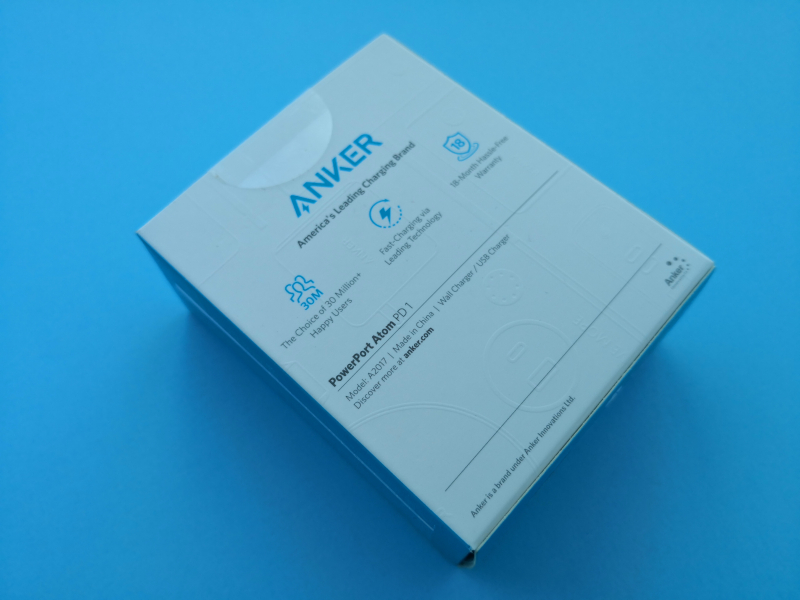

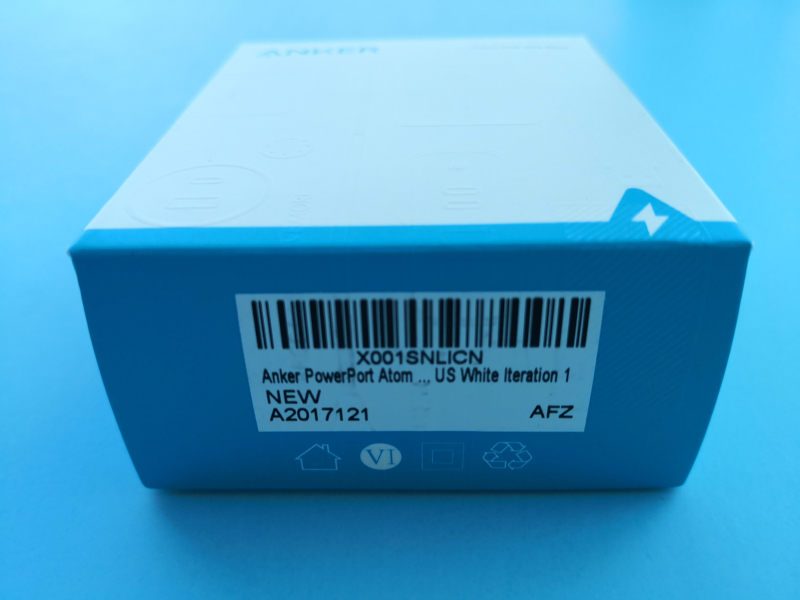
The Anker PowerPort Atom PD 1 unfortunately doesn't come with a USB Type-C cable which would have been useful otherwise. In contrast you would normally find a included USB Type-C cable from other popular charger brands like Belkin and Ventev.

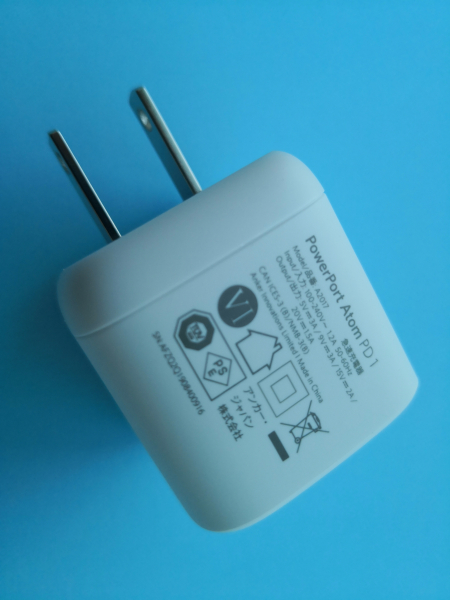
This single port ac wall charger has ac power prongs that are used to plug in to a ac power outlet for charging.

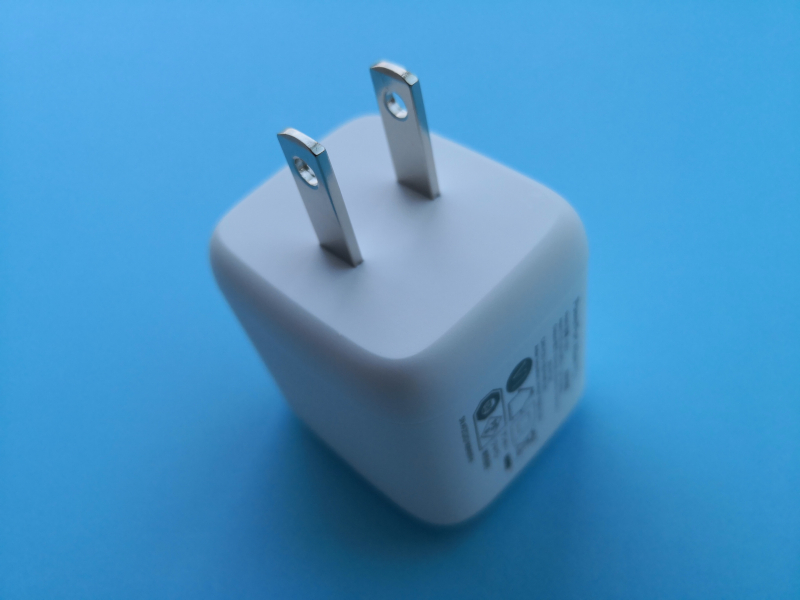
Here we can see how the Anker PowerPort Atom PD 1 is noticeably smaller in comparison to the Anker PowerPort Speed PD 30 charger.
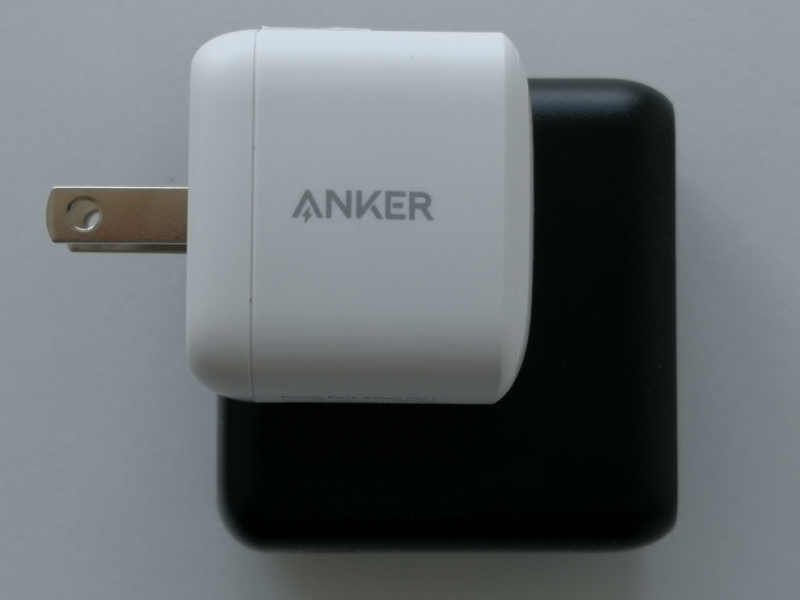
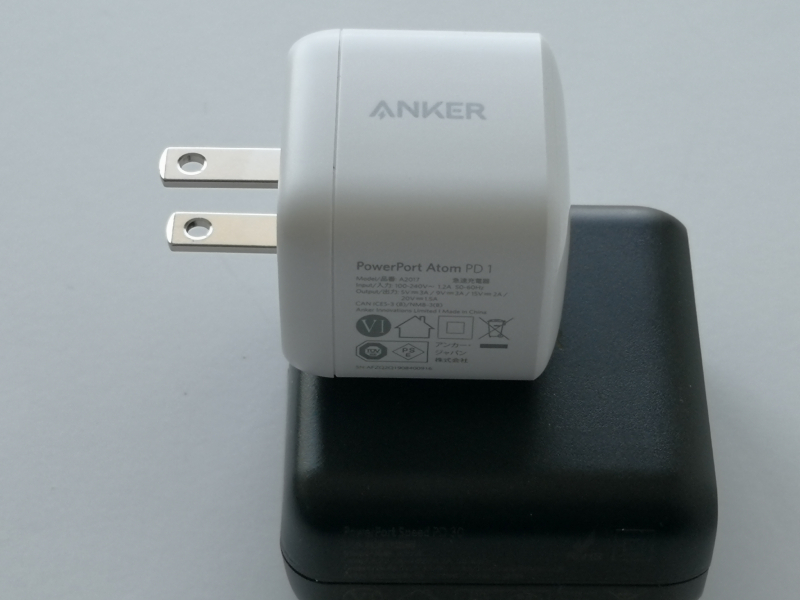
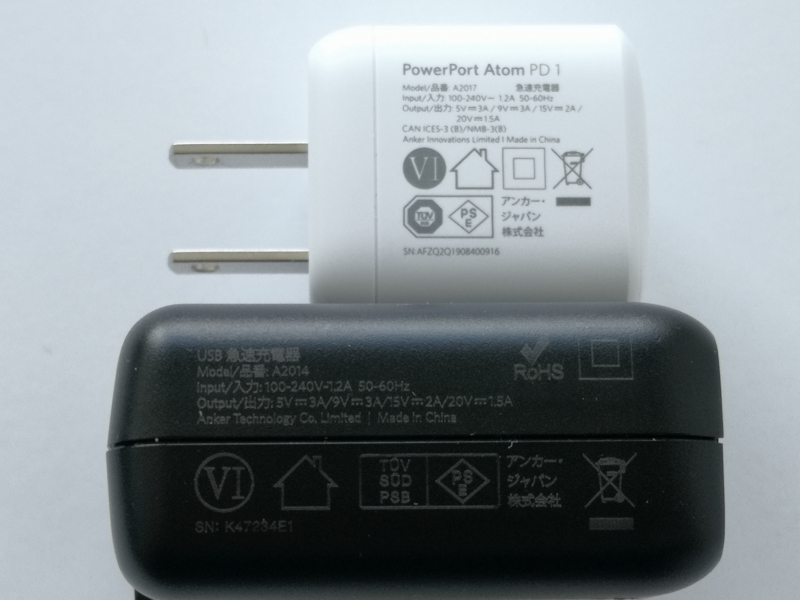
To see how the Anker PowerPort Atom PD 1 charger supports power, we used the USB Power Test App from Granite River Labs with the Granite River Labs USB Power Delivery Compliance C2 Tester to produce the following test results.
The USB Power Test App first negotiates a power contract for every PDO supported by the Anker charger, and increases the load gradually to find the threshold where over current protection (OCP) kicks in and voltage and current start to drop for safety reasons.
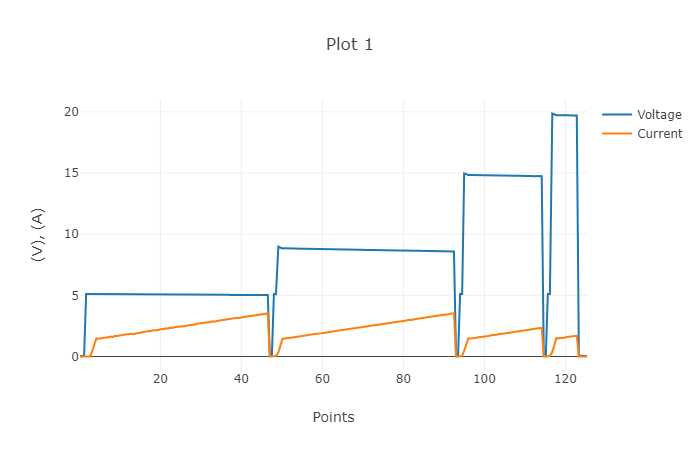
The USB Power Test App reports out all the PDO's supported by the Anker charger and their OCP thresholds.
| PDO | OCP (A) | %OCP |
|---|---|---|
| PDO#1 Fixed: 5V 3A | 3.51 | 116.9% |
| PDO#2 Fixed: 9V 3A | 3.53 | 117.5% |
| PDO#3 Fixed: 15V 2A | 2.33 | 116.7% |
| PDO#4 Fixed: 20V 1.5A | 1.69 | 112.9% |
The USB Power Test App from Granite River Labs takes this data to produce an I-V curve which graphically shows the relationship between voltage and current for each PDO. We can observe as the current increases beyond the OCP threshold, the voltage immediately shuts off.
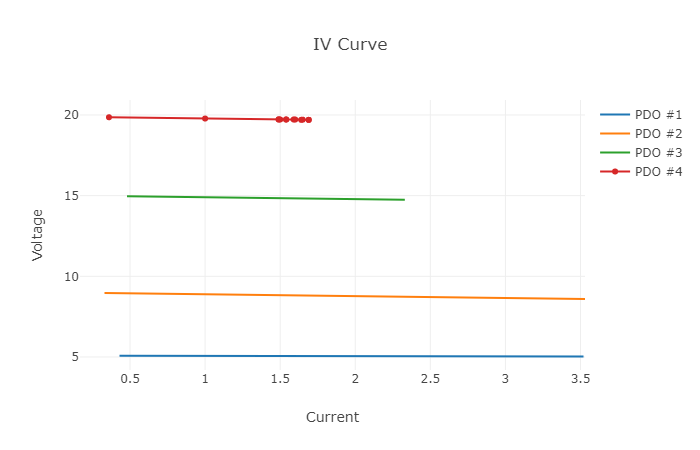
The USB Power Test App can also use the Granite River Labs USB Power Delivery Compliance C2 Tester integrated with the GW Instek APS-7100 programmable AC power supply to compare the charger's power output vs power input so that power efficiency can be measured and compared to regulatory limits from United States of Energy (DOE) Level VI or European Union's CoC Tier 2 requirements. We can repeat the power efficiency tests for different PDO's, current load conditions, and different AC input ranges, allowing us to get a complete picture of power efficiency ranges across all different usage scenarios.
As seen here the Anker PowerPort Atom PD 1 charger recorded a max 89.2% efficiency for the 20V, 1.5A PDO which is actually higher when compared to the Anker PowerPort Speed PD 30 charger at max 84% efficiency for the same PDO.
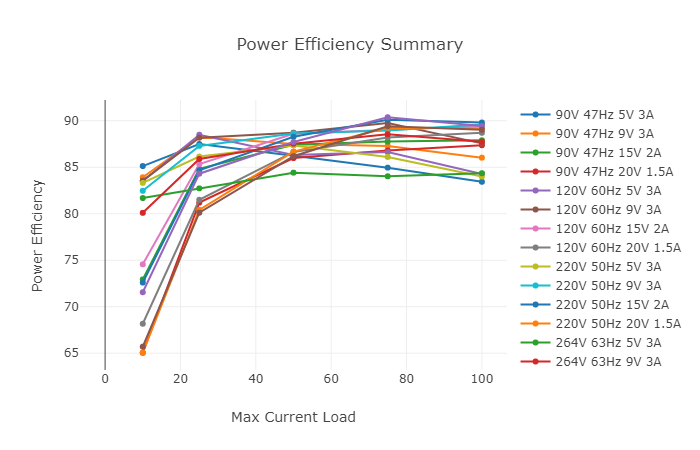
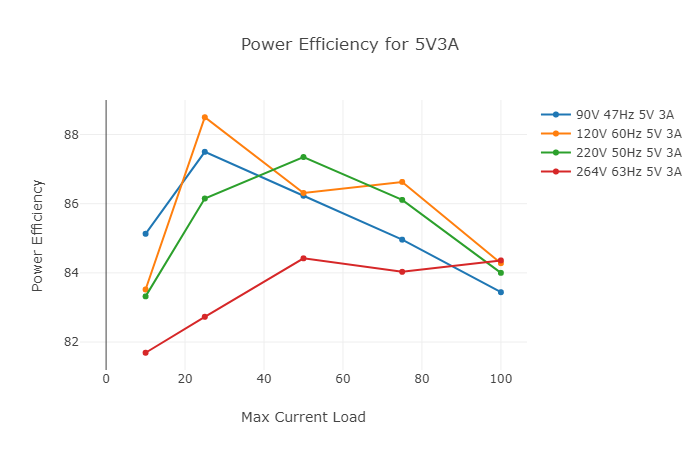

Using the USB Power Test App and FLIR thermal imaging tools, we measured the heat emitted by the Anker PowerPort Atom PD 1 charger as seen in the following temperature readings and traces for the highest 20V, 1.5A PDO. The max temperature was observed at 66.58 degree Celsius at 30W. Note that this charger is just slightly cooler than the Anker PowerPort Speed PD 30 which recorded a 66.77 degree Celcius max temperature, but takes much longer time of ~5 hours to reach the max temperature compared to only ~1 hour and 24 minutes by the Anker PowerPort Speed PD 30.

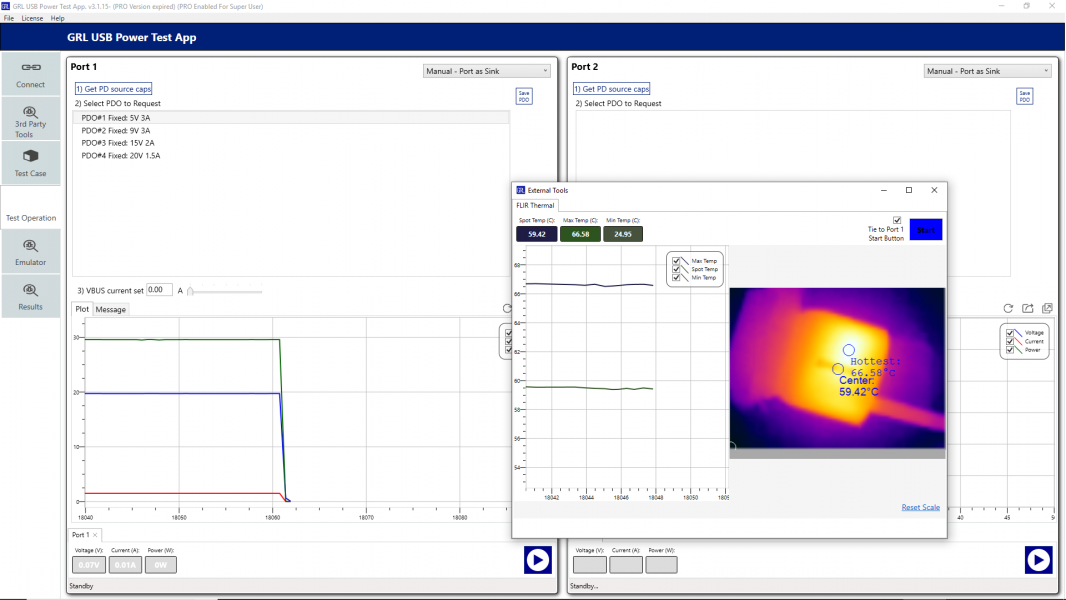
Using the USB Power Delivery Compliance C2 Tester from Granite River Labs to run just a subset of the full USB Power Delivery compliance test suite, a compliance failure was observed for the Anker PowerPort Atom PD 1 charger.
USB-IF High Level Mapping Summary
Sl No
|
Test Category
|
Test Group Description
|
Test Result
|
|---|---|---|---|
1
|
PHY_PRIMARY_TX
|
BMC Physical Layer Transmitter
|
PASS
|
2
|
PHY_PRIMARY_RX
|
BMC Physical Layer Receiver
|
PASS
|
3
|
PHY_PRIMARY_MISC
|
BMC Physical Layer Miscellaneous
|
PASS
|
4
|
PROT_PRIMARY
|
Protocol Specific Primary
|
FAIL
|
5
|
POWER_PRIMARY
|
Power Source/Sink Primary
|
PASS
|
Result Summary
Sl No
|
Test ID
|
Test Name
|
Test Result
|
|---|---|---|---|
1
|
TDA.2.1.1.1
|
TDA.2.1.1.1 BMC PHY TX EYE
|
PASS
|
2
|
TDA.2.1.1.2
|
TDA.2.1.1.2 BMC PHY TX BIT
|
PASS
|
3
|
TDA.2.1.2.2
|
TDA.2.1.2.2 BMC PHY RX INT REJ
|
PASS
|
4
|
TDA.2.1.2.1
|
TDA.2.1.2.1 BMC PHY RX BUSIDL
|
PASS
|
5
|
TDA.2.1.3.1
|
TDA.2.1.3.1 BMC PHY TERM
|
PASS
|
7
|
TDA.2.2.1
|
TDA.2.2.1 BMC PROT SEQ GETCAPS
|
PASS
|
8
|
TDA.2.2.2.1
|
TDA.2.2.2.1 BMC PROT SEQ CHKCAP P PC
|
FAIL
|
9
|
TDA.2.2.2.2
|
TDA.2.2.2.2 BMC PROT SEQ CHKCAP NOMARK P PC
|
PASS
|
13
|
TDA.2.2.7
|
TDA.2.2.7 BMC PROT BIST NOT 5V SRC
|
PASS
|
15
|
TDA.2.2.9
|
TDA.2.2.9 BMC PROT GSC REC
|
PASS
|
16
|
TDA.2.3.1.1
|
TDA.2.3.1.1 POW SRC LOAD P PC
|
PASS
|
17
|
TDA.2.3.2.1
|
TDA.2.3.2.1 POW SRC TRANS P PC
|
PASS
|
BMC Eye Diagram
We look forward to testing the Anker PowerPort Atom PD 1 charger with various USB Type-C peripherals in the next coming reviews.
View Full Article
USB PD Charging Technologies & Battery Life Benchmarking
Featured Products
 GTrusted
GTrusted


































